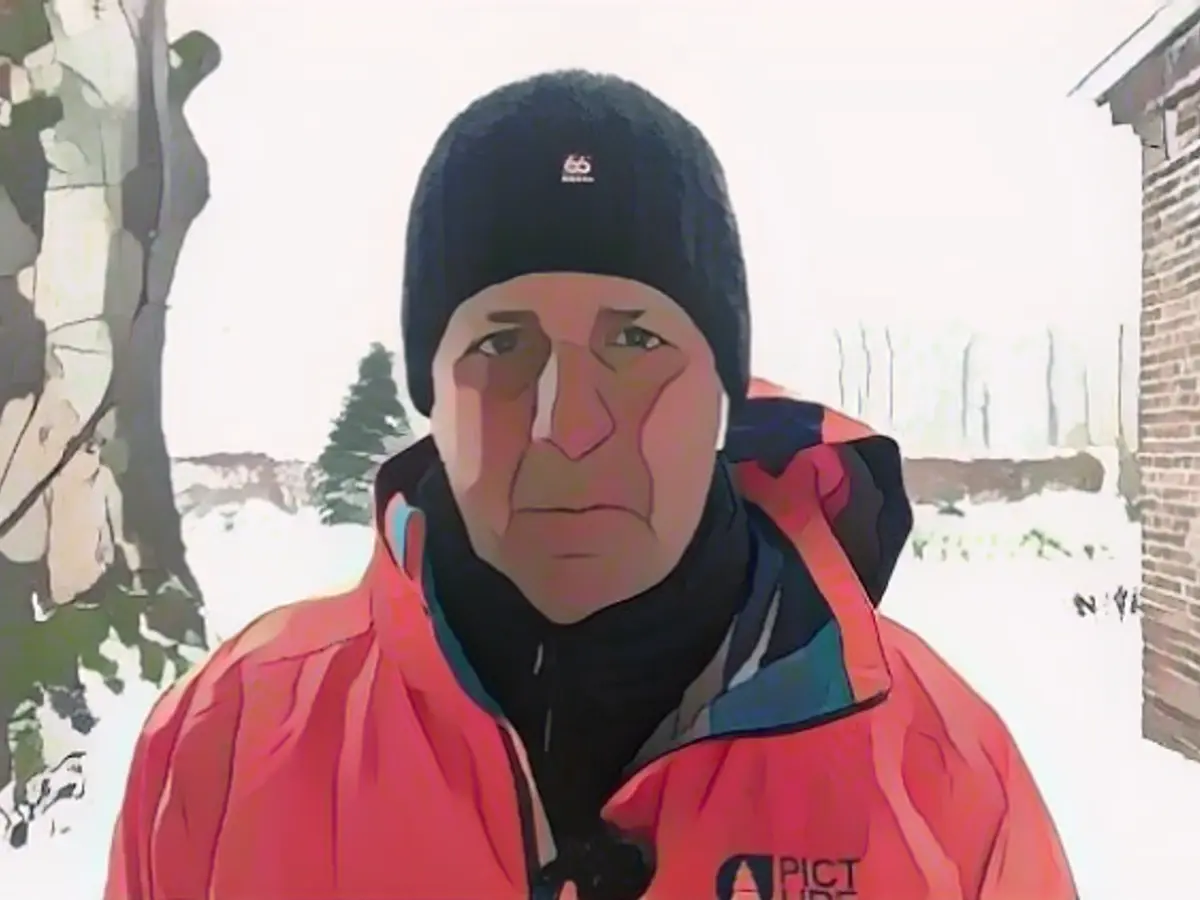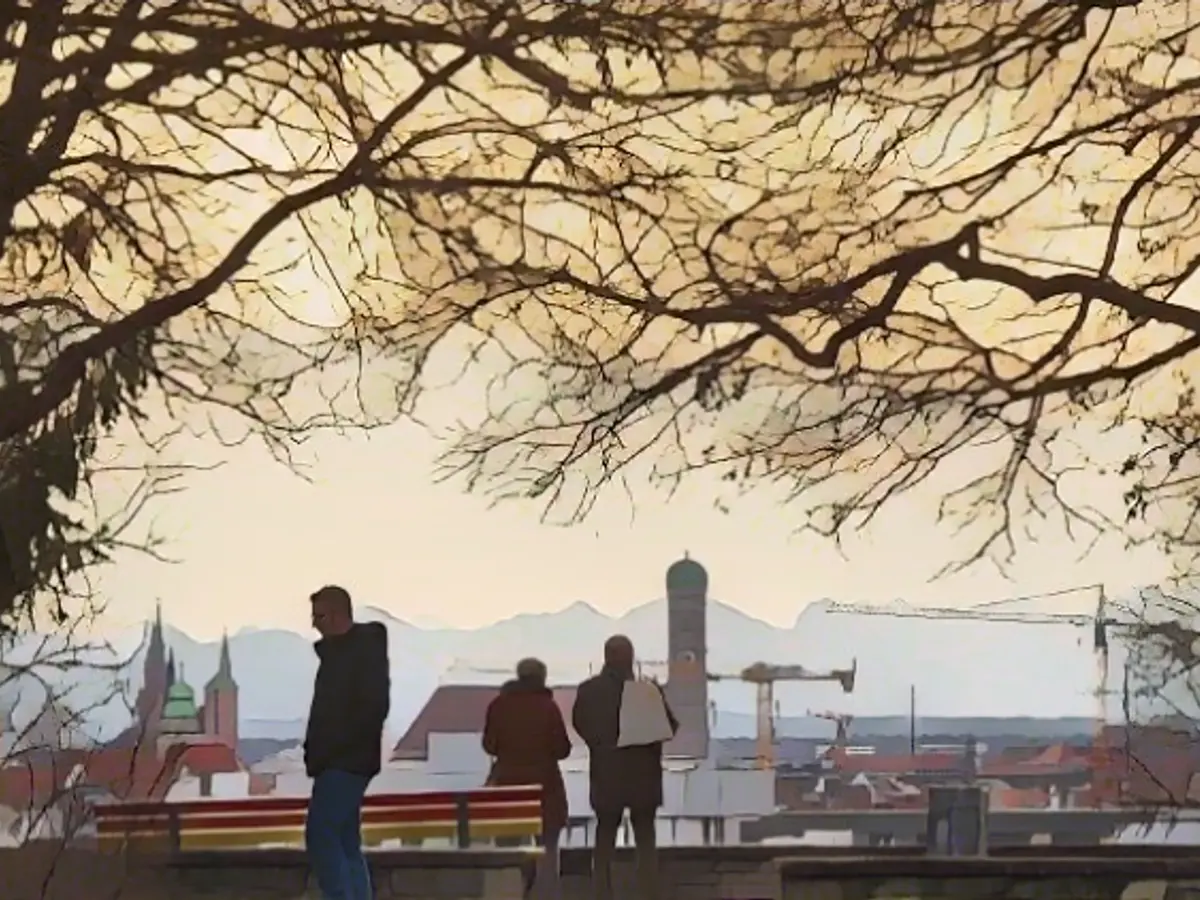What will the weather be like on New Year's Eve?
With over 300 liters per square meter in some places, enormous volumes of water poured over us in December. And the flood situation remains tense and even dangerous in the new year. But there are also rays of hope that could put a smile on the faces of winter lovers and ease the flood risk in the long term.
ntv.de The weather year 2023 is ending on a mild note and with a sometimes tense flood situation. Is a change in the weather in sight for the new year?
Björn Alexander: Regionally, the flood situation will unfortunately remain volatile and even dangerous beyond the turn of the year. There is no sign of a lasting change in the weather in the next few days. However, there is a silver lining on the horizon.
What does that mean in concrete terms?
For some time now, some computer models have been indicating a weakening of the polar vortex. Warming processes in the upper atmosphere would therefore cause the vortex to become unstable. Even a subsequent split, i.e. a division of the polar vortex, would be conceivable under these circumstances.
With what consequences for our weather?
First of all, if this actually happens, it would open up opportunities for winter in this country. It could also lead to longer periods of high pressure weather. For example, the American weather model suggests a changeover from around Epiphany, i.e. January 6. However, another part of the weather computer evaluates the development quite differently.
How does the other part see it?
The experimental long-term forecast currently speculates that January will be significantly too warm and, above all, too wet in the center and south of our country. This would also leave options for a winter comeback in the mountains. The bottom line, however, is that the changeable and sometimes stormy times would go into extra time. In short, we are currently in a relevant phase that sets the course for the so-called high winter.
What does high winter usually mean?
Similar to midsummer, which is normally the hottest time of the year, midwinter is - climatologically speaking - the coldest phase of the year. In our latitudes, this is normally from the beginning/mid-January to mid-February. In this respect, the colder variants in the forecasts and calculations for the second third of the month are now very plausible.
How much more rain should we expect before the possible weather change?
In the worst-case scenario, the weather models predict 40 to 60 liters per square meter in some areas up to and including January 5. At peak times, even over 80 liters are conceivable in the congested areas of the mountains.
What does that mean in terms of monthly precipitation?
In any case, this is in the direction of the precipitation target for January as a whole, which normally brings an average of just under 60 liters per square meter in Germany. Only with the option of colder air and a falling snow line or a drier phase would a lasting easing of the water balance be possible. Ultimately, the situation is not only very dicey directly on the rivers. Elsewhere, too, meadows and areas are flooded over large areas and at the same time the groundwater is pressing into the buildings from below.
What are the prospects for the next few days in detail?
At the moment, storm "Bodo" is forming over the British Isles, which will then also extend to us. This means we can expect another strong to stormy south-westerly wind on Friday, which could reach gale force near the showers and hurricane force on the mountains.

In what weather?
In NRW, Lower Saxony and Schleswig-Holstein in particular, there is a threat of further rain with a possible worsening of the flooding situation. Things look much better in the south, however, where the weather will remain dry and friendly for a long time. All this with very mild temperatures of 8 to 14 degrees.
And at the weekend?
The showers will ease quickly on Saturday and a few windows of sunshine will open up temporarily. It will continue to be windy and a little cooler at 5 to 12 degrees. But unfortunately the improvement in the weather won't last too long. On a very windy New Year's Eve, new rain clouds spread from the west with similar temperatures.
What should we be prepared for at the turn of the year?
New Year's Eve will continue to be changeable and windy. Especially in the north-western half of the country, while there is a better chance of a dry start to the New Year in the south and south-east. Temperatures will range between 3 and 10 degrees. At least on New Year's Day, Peter will have mercy and send us - after the last showers during the northern lights - a temporary calming of the weather with a maximum of 3 to 10 degrees.
But the next rain probably won't be too long in coming, will it?
Unfortunately, that's how it looks. The lows will be knocking on the door again from the west on Tuesday. Then again with female first names, by the way. The reason for this is the annual alternation between male and female first names for highs and lows that has been going on since the end of the 1990s. Of course, this doesn't make the weather any better - with luck, the situation could finally change for good from Epiphany onwards.
Read also:
- Snow chaos further restricts Bavaria
- Extreme weather year: of masses of water and hurricanes
- "Zoltan" sweeps across the country - disruptions to rail traffic
- "Zoltan" brings masses of water, rail chaos and suspected tornadoes
Despite the ongoing flood situation, there's hope for winter lovers. Some computer models suggest a weakening of the polar vortex, which could lead to a division and potentially milder weather for New Year's Eve. However, other models predict a continuation of the changeable and often stormy weather, keeping the flood risk high. International meteorological communities also monitor these developments closely, as extreme weather patterns are becoming more common worldwide.
Source: www.ntv.de






